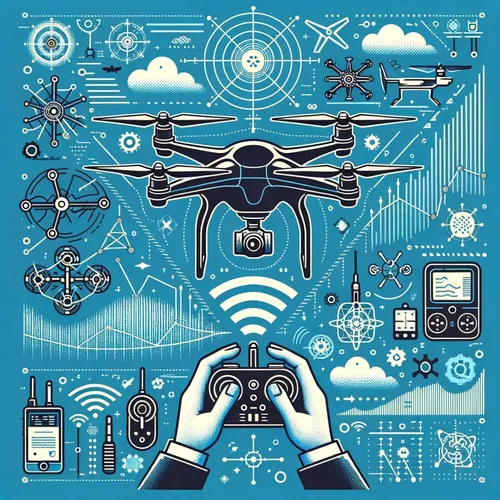Drones Gone Wild: Juicy Secrets of the Sky Spies Revealed!
- Author
- Quiet. Please
- Published
- Sun 27 Jul 2025
- Episode Link
- https://www.spreaker.com/episode/drones-gone-wild-juicy-secrets-of-the-sky-spies-revealed--67139880
This is you Commercial Drone Tech: Enterprise UAV Solutions podcast.
Commercial drone technology is transforming the enterprise landscape, with industries like construction, agriculture, energy, and infrastructure inspection rapidly adopting unmanned aerial vehicles to boost efficiency, cut costs, and derive actionable insights from the skies. In construction, drones are now a standard tool for site mapping, progress monitoring, and 3D modeling, with companies reporting time savings of up to 70 percent on data capture compared to traditional methods, according to research cited by the Association for Uncrewed Vehicle Systems International. For agriculture, drones facilitate precision crop monitoring, enable targeted spraying, and support yield analysis, dramatically improving input efficiency and land stewardship. In the energy sector, utilities leverage drones for transmission line inspections and asset management, reducing the need for dangerous manual inspections and minimizing downtime. Infrastructure operators rely on these aerial devices for bridge and building surveys, gathering high-resolution data that informs critical maintenance decisions.
Case studies in each sector show a strong return on investment. For example, a large energy provider in Texas using automated drone-inspection fleets reported annual maintenance savings exceeding 25 percent, while a global construction firm saw an 80 percent reduction in rework costs due to better site visibility and rapid as-built comparisons. With platforms like Auterion Suite, DJI FlightHub, and FlytBase, enterprise drone fleet management is becoming seamless. These cloud-based systems deliver live telemetry, automate mission planning, and centralize maintenance logs, supporting compliance and predictive repairs. Aloft provides security-focused airspace and fleet oversight, integrating with federal and local airspace management as well as enterprise APIs, so businesses can easily sync drone data into their own systems.
Data protection and regulatory compliance have become major priorities. Fleet management platforms like FlytBase and Aloft offer enterprise-grade security and detailed logs to support FAA reporting and evolving GDPR-aligned privacy standards, critical for organizations operating globally. Today’s top hardware partners deliver compatible docking stations, sensor payloads, and AI-powered edge devices, while software tools manage everything from photogrammetry to automated defect detection.
Recent news highlights underscore this growth: the Federal Aviation Administration has expanded beyond visual line of sight waivers for infrastructure inspection this month; DJI’s new drone model tailored for high-precision mapping launched in July, and the Department of Energy awarded grants to drone innovators focused on grid resilience. Market analysts at Drone Industry Insights now project global commercial drone market revenues to double by 2028, fueled by cross-sector adoption and advancing autonomy.
For teams planning to deploy or scale enterprise drone programs, practical action items include piloting small-scale use cases with measurable goals, selecting a management platform that supports both compliance and integration, investing in operator training, and establishing clear protocols for data governance and cybersecurity.
Looking ahead, expect increasing autonomy, widespread use of drones-in-a-box for round-the-clock operations, and broader enterprise system integration—where aerial intelligence feeds directly into corporate decision-making workflows. Thanks for tuning in today, and be sure to join us next week for more industry insights. This has been a Quiet Please production, and for more, check out Quiet Please dot AI.
For more http://www.quietplease.ai
Get the best deals
